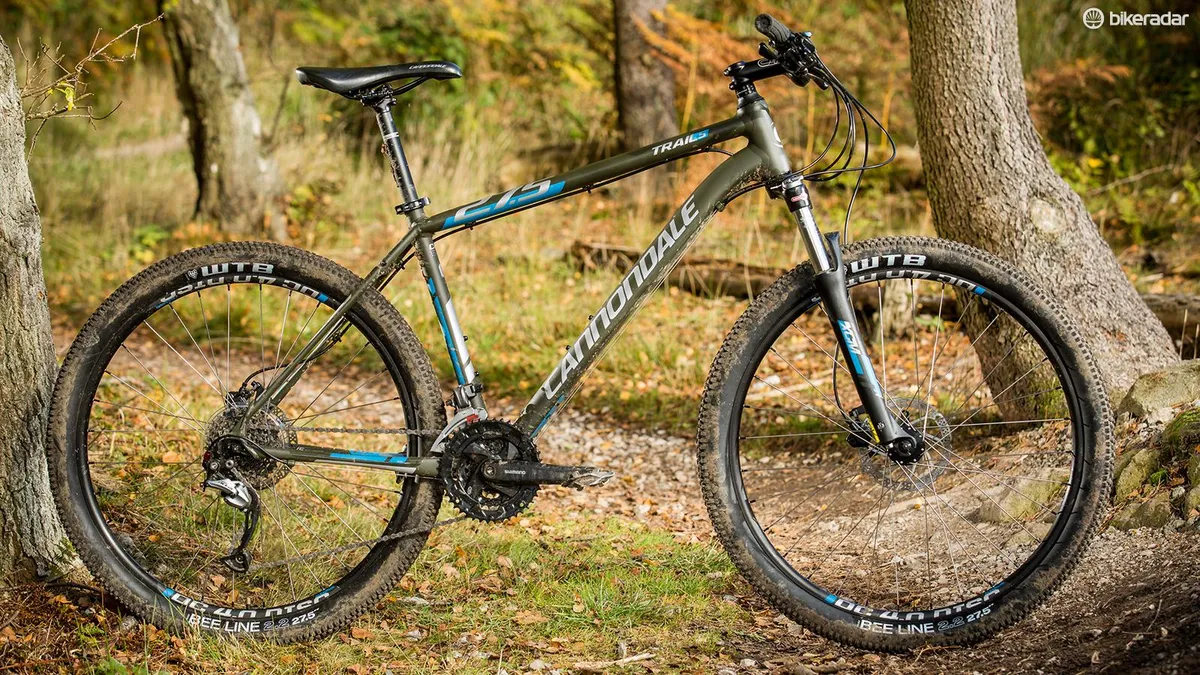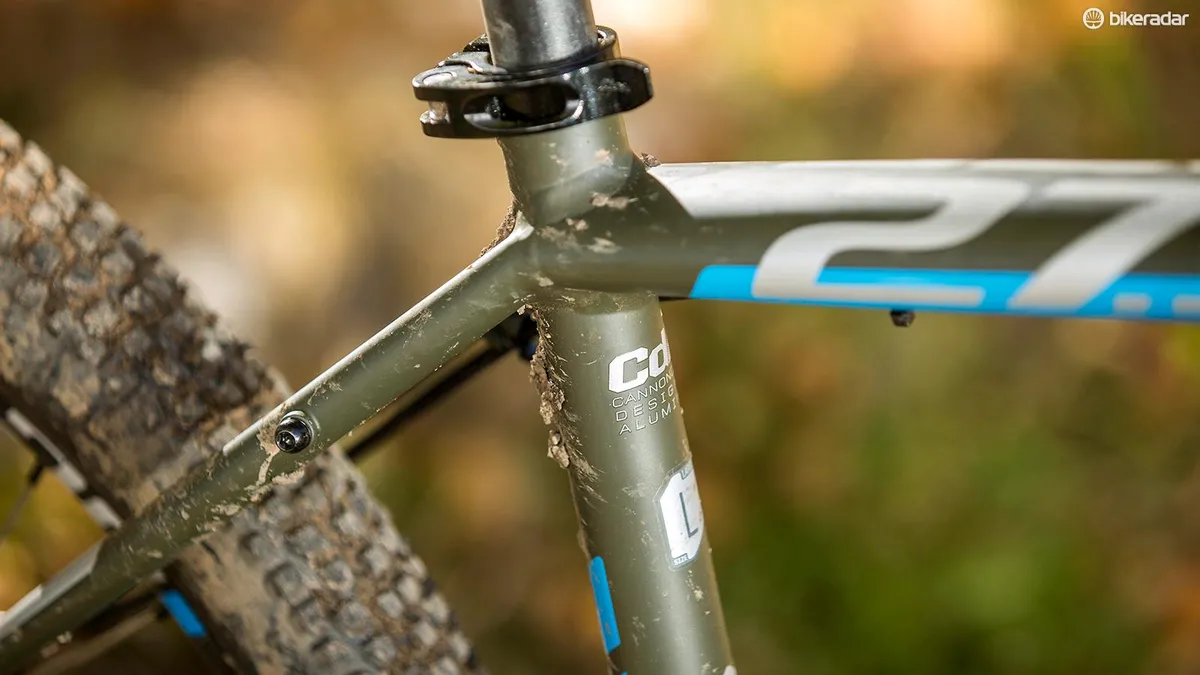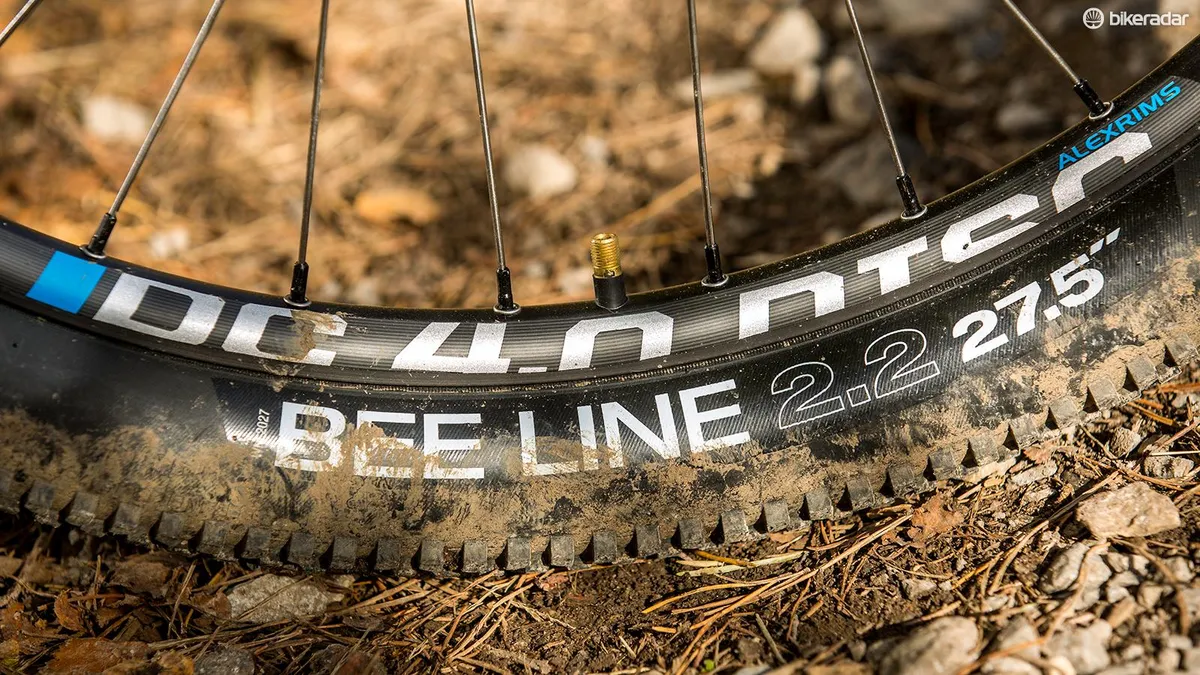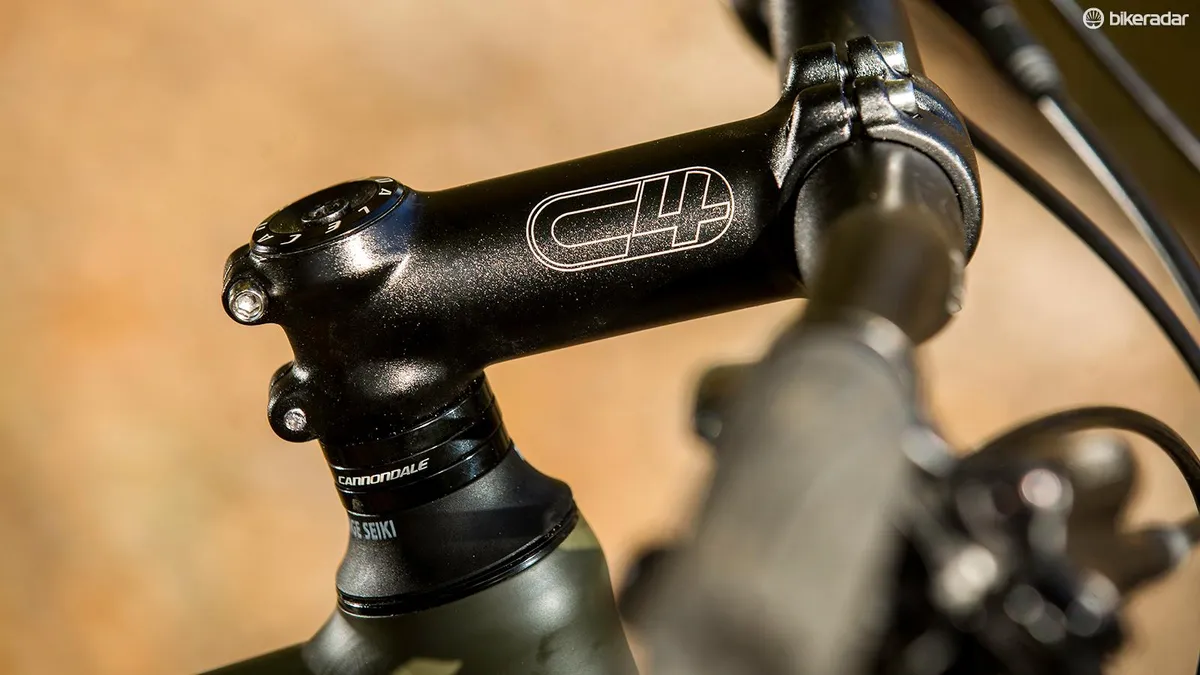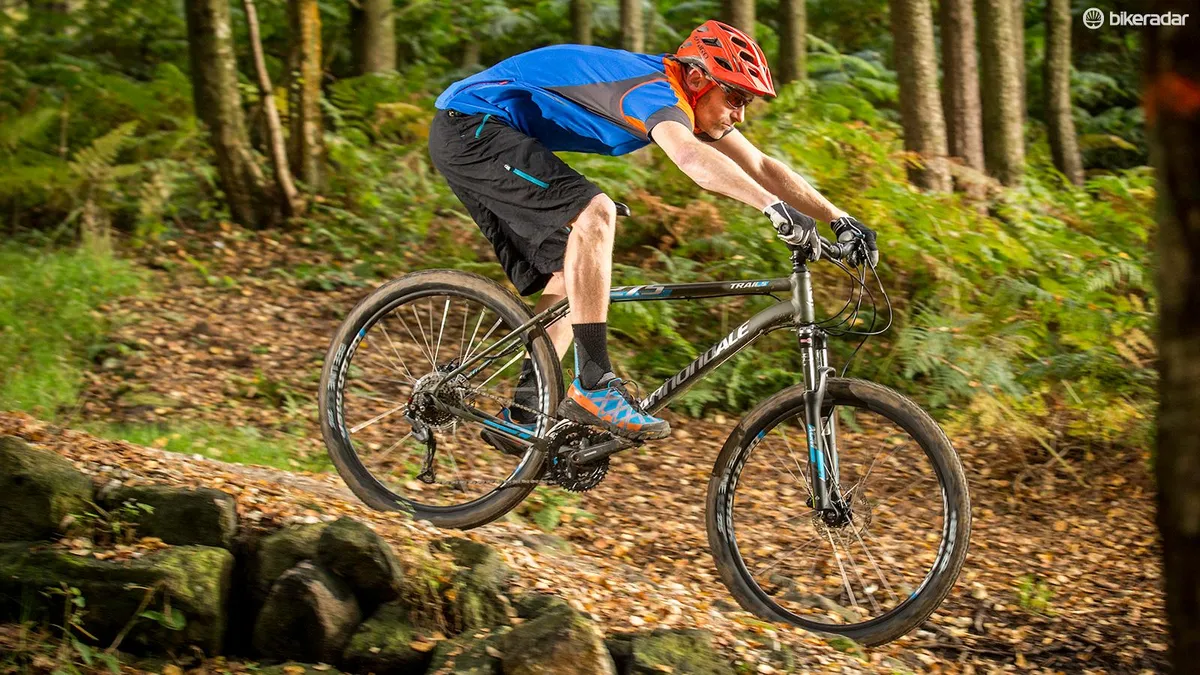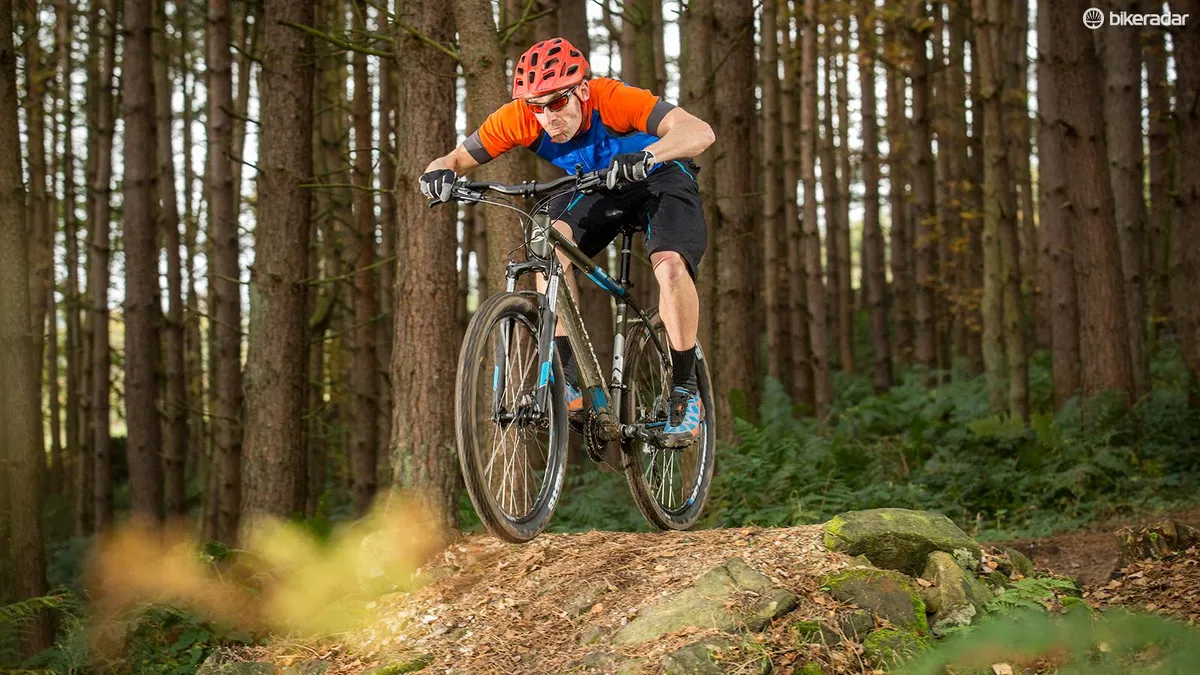Cannondale has built its reputation on a history of innovation that stretches back over 25 years. It’s no surprise then that even the bikes in its cheaper Trail range get a distinctive looking and riding frameset that smooth cruisers will love.
Smooth seams, some rough kit choices
The seams between the tubes have Cannondale’s signature smooth, double welded finish. The oval top tube blends into the rear stays seamlessly on either side of the seat tube and the ‘SAVE’ stays themselves have dramatically flattened centre sections to allow impact-absorbing vertical flex.
The forged dropouts are really pretty pieces of 3D sculpture too. The 27.2mm seat tube allows use of a skinny, flexible seatpost for comfort but it’ll make it hard to find a compatible dropper post if you upgrade later and, in the meantime, the bottle bosses halfway down get in the way of manual seat adjustment.
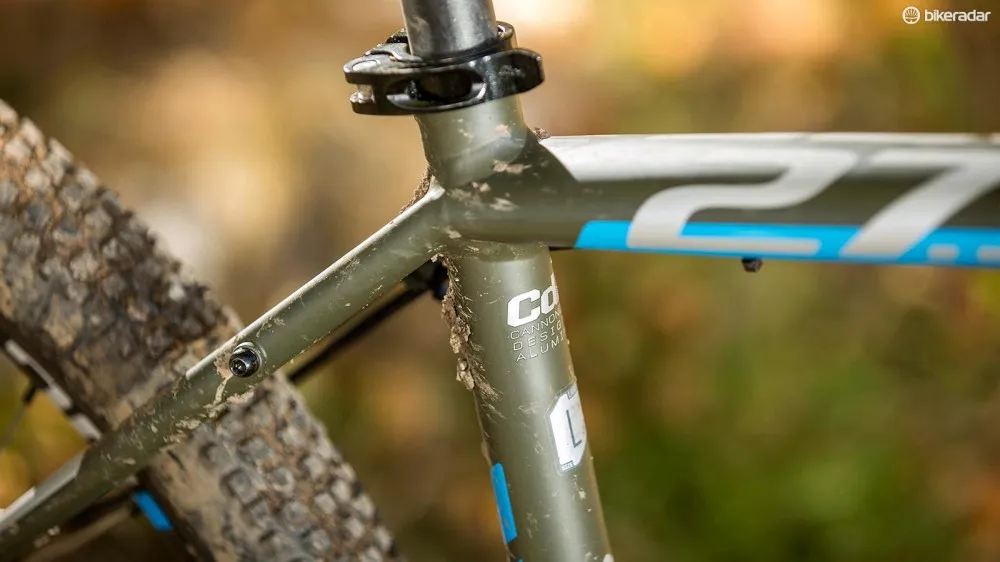
Cannondale’s double-welded, neatly detailed frame looks great, and its ride is as silky as its looks
Cannondale has clearly invested a lot of money in the Trail frame, and the pricetag it’s delivered at has a clear impact on kit levels. The good news is that the American brand has spent sensibly on the wheelset as well as the frame. The Alex-rimmed wheels are light, and are well matched with fast-rolling and buoyant feeling WTB rubber.
The Suntour XCM fork is smooth over small stuff, but with no meaningful spring adjustment or damping it soon gets ragged on rougher trails. You do get a remote lockout switch for sprinting though.
The nine-speed gears are an obvious money-saving touch, and the SunRace cassette is clunky compared to the higher-spec sprockets and derailleurs found on some of the competition. The square-axle triple crankset feels soft underfoot and the pressed steel chainrings aren’t replaceable.
The Tektro Auriga brakes are wooden and uncommunicative compared with Shimano items, the bar is restrictively narrow and the stem awkwardly long too.
Narrowing your options
The effect of the cockpit dimensions is obvious straight away. On the plus side you can sneak between trees or down tight alleys without worrying about getting your handlebar wedged. The whole turning axis of the bike is altered though – it feels like it pivots further back than rivals such as the Scott Aspect 720 and Diamondback Heist 2.0 27.5 despite having essentially the same geometry.
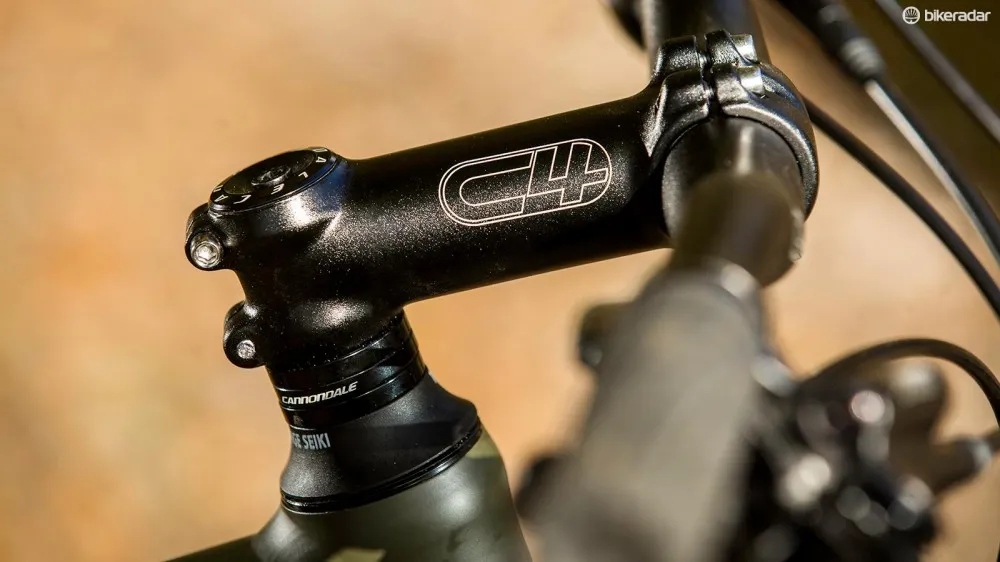
If you like singletrack, it's worth negotiating a new cockpit before you leave the shop
Less leverage from the bar and a stubborn straightforward influence from the long stem mean you have to aim early to hit gaps or smooth lines because it’s harder to adjust your line mid manoeuvre. While the Trail 5 will sweep a reasonable line through a single corner, if there’s another turn or line correction straight afterwards you’re likely to end up fumbling off the far edge of it rather than cutting in accurately.
Switching to a wider bar and shorter stem needn’t cost the Earth, especially if you negotiate a change before leaving the shop, but there are other grumbles too.
Even with a 180mm front rotor to add a bit of braking grunt, the numb-feeling Aurigas don’t help with subtle control or skid steering attempts. The skinny-axle cranks and soft rear end sap power transfer between the pedals and rear wheel too.
Even with the light wheels, that left the Cannondale lagging whenever the hammer went down hard on group rides. The positive side is that once you’ve got it up to speed (a measured spin rather than angry stomp works best) that same smoothness does a great job of shrugging off lumps and bumps that’ll knock momentum out of tighter-feeling bikes.
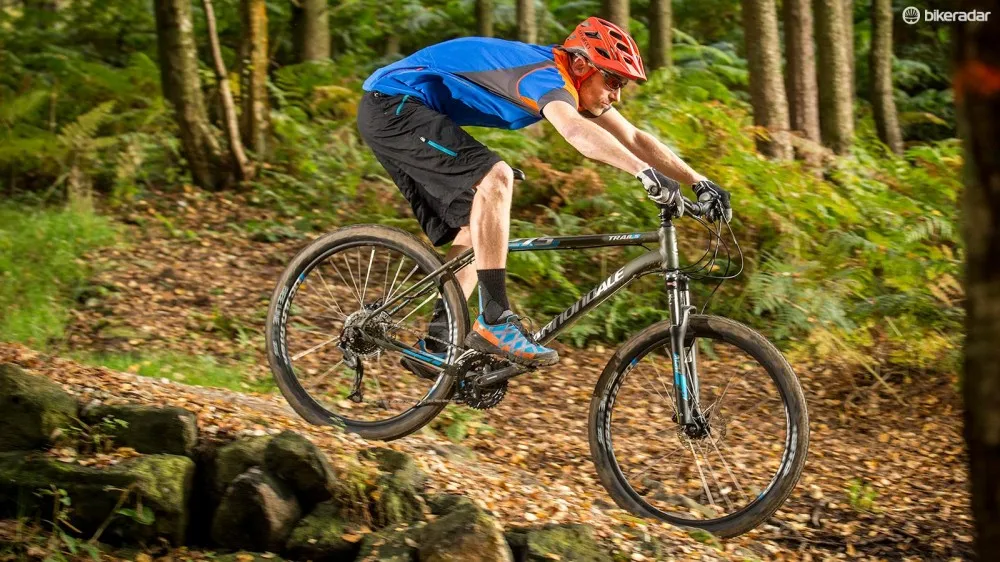
The smooth-riding Trail 5 does a great job of shrugging off lumps and bumps
Rear wheel traction is also enhanced by the compliant connection with the trail, and while the WTB BeeLine tyres are definitely designed more for speed than grip, the Cannondale felt impressively planted on singletrack. Once we’d switched the bar and stem, the relatively smooth fork and reasonable front end accuracy made for confident hookup and obedient line hacking.
The vibration-killing, wallop-dodging rear end becomes more and more appreciated the further you ride too. Add the clean and easy-rolling feel of the wheels and the Trail 5 is an enjoyably cultured long-distance cruiser – especially considering its price tag.
While the straight head tube will limit fork upgrade choices, the rolling chassis is certainly good enough to justify adding better kit as the original components wear out too, which is a rare statement for bikes at this price.

